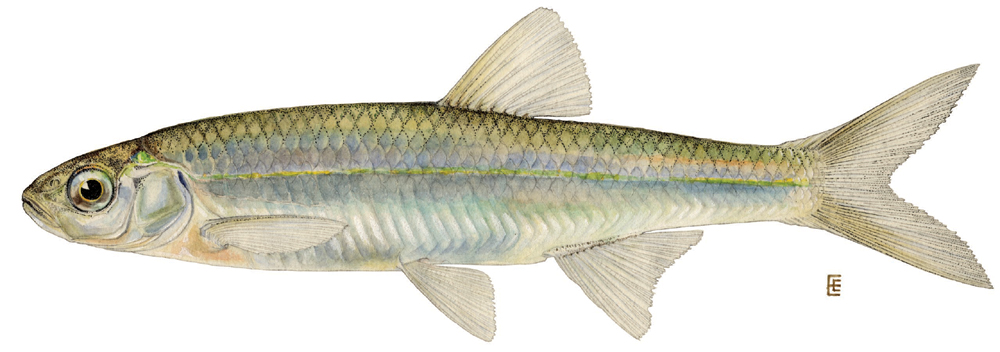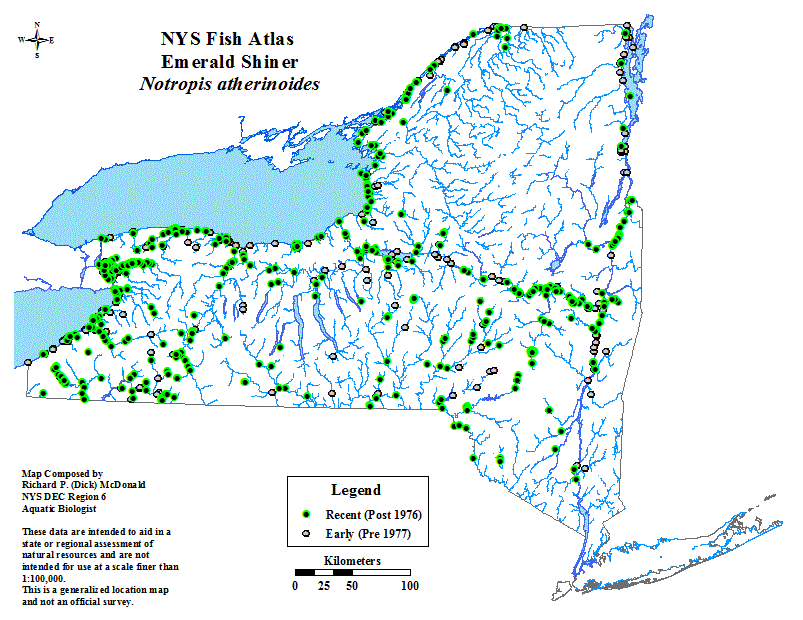
Emerald Shiner (Notropis atherinoides)
The range of the emerald shiner includes a broad band across southern Canada from Lake Champlain and the St. Lawrence River to the southern part of the Northwest Territories. Its southern limit dips through the Mississippi basin to the Gulf of Mexico coast from Texas to Alabama. In New York, emerald shiners are found in the Great Lakes and in the Hudson-Mohawk system, and were formerly very abundant within the Great Lakes.
The emerald shiner is a fish of big waters, the Great Lakes and larger rivers, such as the Niagara and the Hudson. It is a midwater or near-surface species that usually lives in large- or moderate-sized schools. In the spring, they often make vertical migrations, approaching the surface at night and retreating to deeper water during the day.
The emerald shiner spawns in the late spring or early summer, sometimes as late as mid-August. Water temperatures at that time are around 75 F and the eggs hatch in 24 to 32 hours. Emerald shiners rarely live through their third summer. Population numbers fluctuate and they are extremely abundant in some years, scarce in others.
The emerald shiner is a midwater plankton feeder, consuming a variety of zooplankton. Protozoans are important in the diet of the young-of-the-year shiners, and fish and insect larvae are eaten by adults.
Distribution of the emerald shiner in NY state.
A 142 KB image of the emerald shiner is also available for download.
The above species description was taken out of "The Inland Fishes of New York State" by C. Lavett Smith, published by the New York State Department of Environmental Conservation, 1985.
